“Deer Eat: Unveiling the Fascinating Dietary Habits of These Graceful Herbivores”
1. “What Do Deer Eat: A Comprehensive Guide to their Diet”

Deer have a diverse diet and are known to eat just about everything that grows from the ground or falls from a tree. This includes not only plants but also the tree itself. They are nibblers and enjoy having a wide variety of food options, making them adaptable and successful as a species. In fact, they can consume hundreds of different foods, including grasses, sedges, forbs, herbs, legumes, fruits, nuts, grains, roots, twigs, leaves, and even rodents and birds.
A study conducted in the Southeast identified over 400 plant species that serve as deer food. However, this number is likely to be even higher. Despite their ability to eat a wide range of foods, deer do have their favorites. These favorites vary depending on the region but generally include acorns, alfalfa, apples, beechnuts, brassicas (such as turnips and kale), cereal grains (like rye and oats), clover, corn, cowpeas (popular in the South), fall leaves (particularly red ones), fir needles (important in winter for Western deer), forbs (including pokeweed and goldenrod), milo (grain sorghum), northern white cedar (commonly found in suburban areas), persimmons (found in southern regions), pears (not commonly found in the wild but irresistible to deer when available), saplings and shrubs (critical for deer survival), soybeans (a favorite both early and late in the season), treetops (especially after wind storms or logging operations).
It’s important to note that these preferences may vary depending on factors such as availability and seasonal changes. For example, acorns are highly favored by whitetail deer when they drop during certain times of the year. Additionally, browse species play a crucial role in a deer’s diet. Browse refers to the leaves, twigs, and buds of small woody plants that stimulate digestion in deer. Key browse species include ash, aspen, bitterbrush, dewberry, dogwood, greenbrier, honeysuckle, maple, mountain laurel, poplar, sagebrush (important for mule deer in winter), and willow.
If you have a lawn or garden and are curious about what deer might eat from it, it’s worth noting that they may be attracted to certain plants. However, their preferences can vary depending on the region and availability of other food sources. Therefore, it’s important to take precautions if you want to protect your plants from deer damage.
Overall, understanding the diverse diet of deer can be beneficial for hunters who want to know what foods are most attractive to them during different seasons. By keeping tabs on these preferred foods and their availability in your area, you can increase your chances of a successful hunt.
2. “The Top 20 Favorite Foods of Deer: What Hunters Need to Know”
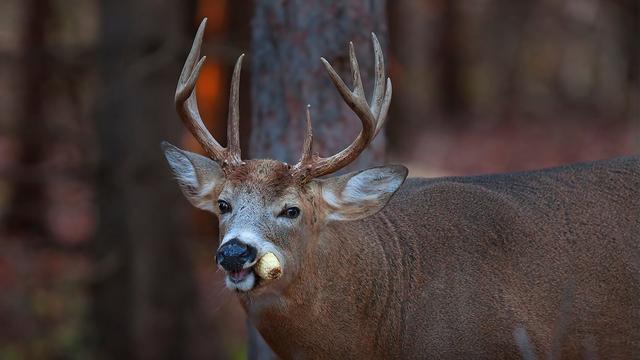
The top 20 favorite foods of deer, according to a study, include acorns, alfalfa, apples, beechnuts, brassicas, cereal grains, clover, corn, cowpeas, fall leaves, fir needles, forbs, milo, northern white cedar, persimmons, pears, saplings and shrubs, soybeans and treetops. These foods are highly attractive to deer and are important for hunters to know and keep track of throughout the hunting season.
Acorns are considered the favorite food of deer in many regions. When available, acorns can make up to 80 percent of a whitetail’s diet. Deer will abandon other food sources to feast on the succulent brown nuts. Acorns without caps tend to have the fine and firm flesh that deer crave.
Deer also love alfalfa throughout the year. They will eat tender shoots in spring and continue eating all summer and fall as repeated harvests promote new growth. Even in winter, deer will dig through snow to reach alfalfa fields.
Apples are like a new candy store for hungry early-season deer. A hidden orchard or even one heavily laden tree can be a first-stop destination for them. Deer will also continue to browse on apple orchards after the fruit is gone.
Beechnuts become an important food source for deer when oak trees are absent or when the acorn crop fails. While the beechnut crop can be hit or miss, when they abound you can bet that deer will be on them.
Brassicas are a great food plot option for late-season hunting. These plants provide green forage at a time when other sources have dried up. Deer will dig for their roots well into winter.
Cereal grains such as rye wheat and oats are favored by deer during their tender young shoot stage. These plants are easy to grow and can be planted even into fall if a summer plot fails.
Clover fields, whether planted by farmers or as food plots, are swarmed by deer. Once established, clover makes for a low-maintenance perennial plot that will attract deer for years.
Corn is a well-known favorite of deer. It is important for hunters to keep close tabs on corn harvests, as freshly cut cornfields can be game changers. Deer will abandon other food sources to follow the combine and feed on waste grain.
Cowpeas are a popular food-plot plant in the South. They are heat-tolerant and very attractive to deer. Fencing off cowpea plots until the season starts is often necessary due to their high appeal to deer.
Deer readily eat fall leaves and seem to prefer freshly dropped ones for their higher moisture content. Their favorite color is red, which has more residual sugar. Dogwood, aspen, and maple are among the top species of fall leaves that deer consume.
Fir needles become a staple food source for winter deer in the West when other food sources are scarce. Mule deer, whitetail, and blacktail rely on fir tree needles during harsh winters.
Forbs, sedges, and herbs that grow naturally in various habitats are powerful deer attractants when green and tender. Whitetails consume up to 70 percent of their summer diet from forbs such as pokeweed, astor, ragweed, wild strawberry, and goldenrod.
Milo or grain sorghum provides great bedding cover for deer while also being a favored food source. Fields of milo can go from having no deer one second to attracting several nice bucks feeding in it the next.
Deer gobble up mushrooms whenever they find them. While it’s unclear how they differentiate between poisonous and non-poisonous varieties, some hunters actually create mushroom crops as in-woods food plots and hunt over them.
Northern white cedar trees planted in suburban areas are often half-eaten by deer. Deer love pears and will show up once the fruit starts dropping from pear trees.
Persimmon trees, common in southern regions, have fruit that is all but irresistible to deer. Keeping tabs on the crop is important as the fruit doesn’t last long once it starts falling.
Other fruits like wild berries, raspberry and blackberry plants, sumac, and honey locust pods can also be important food sources for deer depending on their availability.
Saplings and shrubs are critical food sources for deer. They provide leaves, twigs, and buds that deer need to survive. Woody browse becomes especially important in big-woods habitats away from agricultural fields and food plots.
Soybeans are a favorite food plot planting and a common agricultural crop. Deer will hammer the green foliage of soybean plants in summer and early fall. Later, when the pods mature and dry, soybeans become a huge late-season draw for deer.
Treetops become available to deer after wind storms or logging operations. These suddenly accessible leaves, twigs, and buds become instant hotspots for late-season deer when other food sources are scarce.
Browse species are crucial to a deer’s diet as they stimulate digestion. Whitetails need to consume 7 to 10 pounds of browse every day. Key browse species include ash, aspen, bitterbrush, dewberry, dogwood, greenbrier, honeysuckle, maple, mountain laurel, poplar, sagebrush, willow among others.
In conclusion, knowing the top 20 favorite foods of deer can greatly benefit hunters during hunting seasons. Acorns are highly favored by whitetail deer while alfalfa is a year-round favorite. Apples attract hungry early-season deer while beechnuts come into play when acorns are not available. Brassicas make excellent late-season food plots while cereal grains like rye wheat and oats are easy to grow and attract deer. Clover fields, cornfields, cowpeas, fall leaves, fir needles, forbs, milo, mushrooms, northern white cedar trees, pears, persimmons, saplings and shrubs, soybeans, treetops are all important food sources for deer. Additionally, browse species such as ash, aspen, bitterbrush, dewberry, dogwood, greenbrier among others play a critical role in a deer’s diet.
3. “Deer Food Preferences: Understanding What Attracts Them”
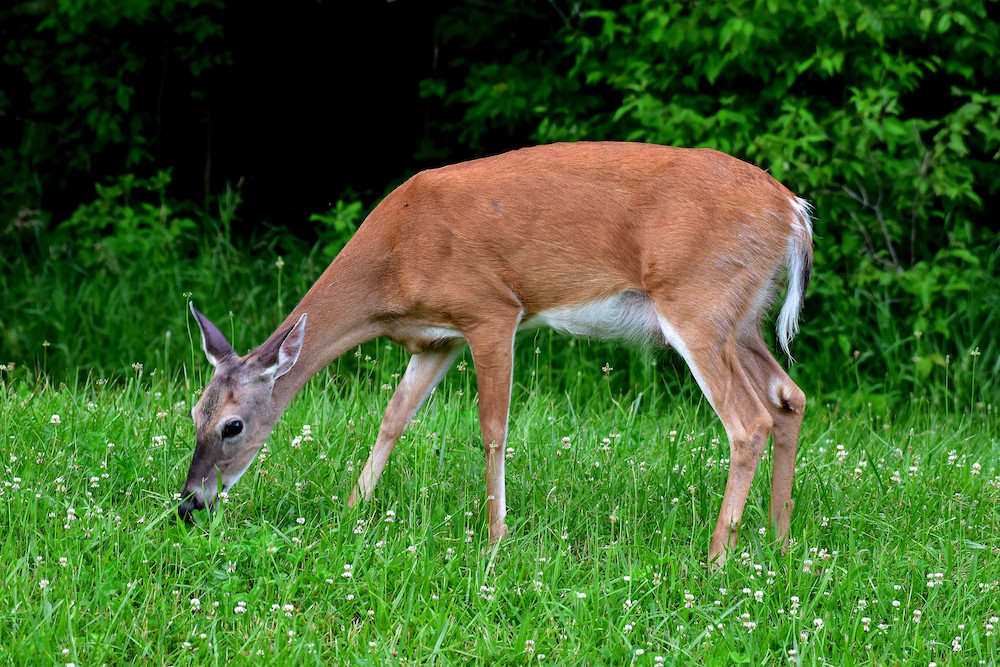
Deer have a wide range of food preferences, and understanding what attracts them can be beneficial for hunters and those who want to attract deer to their property. While deer will eat just about anything that grows from the ground or falls from a tree, there are certain foods that they are particularly drawn to.
One of the key reasons why deer are so successful as a species is because they can eat hundreds of different foods. They consume various plant species including grasses, sedges, forbs, herbs, legumes, fruits, nuts, grains, roots, twigs, leaves, and even rodents and birds. In fact, one study identified over 400 plant species as deer food in the Southeast alone.
However, when it comes to their favorite foods, the list is surprisingly short. The top 20 deer foods include acorns, alfalfa, apples, beechnuts, brassicas (such as kale and turnips), cereal grains (like rye and oats), clover, corn, cowpeas (a type of legume), fall leaves (particularly red ones), fir needles (in winter), forbs (wildflowers and herbs), milo (grain sorghum), northern white cedar (commonly found in suburban areas), persimmons (more common in southern regions), pears (if available), saplings and shrubs (important for survival especially in big-woods habitats), soybeans (both early and late season favorites), and treetops that have fallen or been felled.
While this list covers the key foods that deer hunters need to know and keep tabs on throughout the seasons in most regions of North America, it’s important to note that some preferences may vary depending on location. For example, pear trees may not be as common in certain areas compared to others.
It is also worth mentioning that browse, which includes the leaves, twigs, and buds of small woody plants, is crucial for deer’s digestion and survival. Some important browse species include ash, aspen, bitterbrush (a favorite of mule deer), dewberry (a vine with tender shoots), dogwood, greenbrier (with edible leaves and berries), honeysuckle (whose leaves remain attached well into winter), maple, mountain laurel (essential for winter survival in some areas), poplar (yellow leaves and buds are favored by muleys), sagebrush (important for winter species availability for mule deer), and willow.
For those who have lawns and gardens or want to attract deer to their property, it’s important to consider what types of plants they prefer. Deer can be attracted to various plants found in lawns and gardens such as clover, alfalfa, apples, pears, persimmons, raspberries, blackberries, sumac fruits if accessible low enough for them to reach.
Understanding the food preferences of deer can help hunters plan their hunting strategies and landowners attract deer to specific areas. By providing a diverse range of preferred foods throughout the seasons, it is possible to create an environment that attracts and sustains deer populations.
4. “From Acorns to Treetops: Exploring the Varied Diet of Deer”
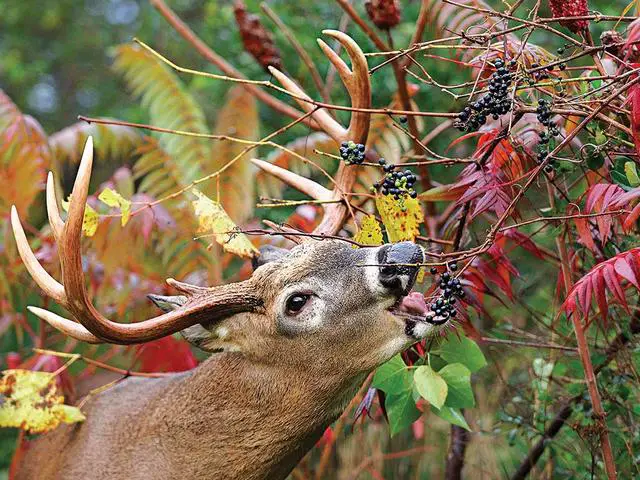
Deer have a diverse and adaptable diet, which is one of the reasons they are so successful as a species. They can eat hundreds of different foods, including grasses, sedges, forbs, herbs, legumes, fruits, nuts, grains, roots, twigs, leaves, and even rodents and birds. In fact, one study identified over 400 plant species as deer food in the Southeast alone. The overall number may be even higher.
While deer can eat a wide variety of foods, they do have their favorites. The top 20 favorite deer foods include acorns, alfalfa, apples, beechnuts, brassicas (such as kale and turnips), cereal grains (like rye and oats), clover, corn, cowpeas, fall leaves (especially red ones), fir needles (important in winter for western deer), forbs (including pokeweed and goldenrod), milo (grain sorghum), northern white cedar (commonly found in suburban areas), persimmons (more common in the South), pears (not commonly found in the wild but irresistible to deer), saplings and shrubs (critical for deer survival), soybeans (a popular agricultural crop and food plot option), and treetops that have fallen or been felled.
Acorns are particularly favored by deer when available. They can comprise up to 80% of their diet at certain times. Deer will abandon other food sources to feast on acorns due to their succulent brown nuts. Alfalfa is another year-round favorite for deer. They will eat it as soon as tender shoots sprout in spring and continue eating it throughout summer and fall. Even in winter with snow cover, deer will dig through the snow to reach alfalfa.
Deer also have a sweet tooth and are attracted to ripe apples. A hidden orchard or heavily laden apple tree can be a first-stop destination for hungry early-season deer. Beechnuts are a staple in areas where oak trees are scarce or when the acorn crop fails. When beechnuts abound, deer will be on them. Brassicas, such as turnips and kale, are popular food plot options and provide green forage during late season when other sources have dried up.
Cereal grains like rye, wheat, and oats are easy to grow and highly attractive to deer. They will eat the tender young shoots of these grains. Clover is another low-maintenance plot option that attracts deer once established. Deer love corn, especially freshly cut cornfields which become a game changer during hunting season.
Other favorites include cowpeas (particularly in the South), fall leaves (with red leaves being preferred due to their higher moisture content), fir needles (important for winter survival in western deer), forbs (including pokeweed and astor), milo (provides great bedding cover for deer), mushrooms (deer can differentiate between poisonous and non-poisonous varieties), northern white cedar (commonly found in suburban areas), pears (irresistible to deer if fruit is dropping), persimmons (common in the South), and other fruits like wild berries, sumac, raspberry and blackberry plants, and honey locust pods.
Deer also rely on browse for their survival. Browse includes the leaves, twigs, and buds of small woody plants that stimulate digestion in a deer’s rumen. Without browse, they cannot survive. Key browse species include ash, aspen, bitterbrush (a favorite of mule deer), dewberry vine (southern favorite with edible leaves into winter), dogwood, greenbrier vine (blue berries last into November with edible leaves all winter), honeysuckle vine (leaves remain attached into winter), maple, mountain laurel (critical for winter survival in some areas), poplar, sagebrush (important for mule deer in winter), and willow.
In addition to natural food sources, deer may also venture into lawns and gardens. Suburban hunters may even hang stands near these areas. Deer can cause damage to lawns and gardens by eating plants and flowers. To prevent this, measures such as fencing or repellents may be necessary.
Overall, understanding the varied diet of deer is important for hunters to know which foods are most attractive to deer throughout the season. By focusing on their favorite foods, hunters can increase their chances of a successful hunt.
5. “Deer Feeding Habits: Insights into their Adaptability and Success”
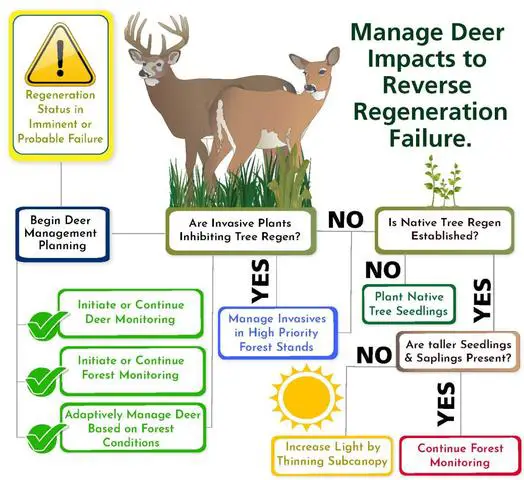
Deer are highly adaptable and successful as a species due to their ability to eat a wide variety of foods. They have a diverse diet that includes everything from grasses, sedges, forbs, herbs, legumes, fruits, nuts, grains, roots, twigs, leaves to even rodents and birds. In fact, one study identified more than 400 plant species as deer food in the Southeast alone. This adaptability allows deer to thrive in various habitats and environments.
While deer can eat a wide range of foods, they do have favorites. The top 20 favorite deer foods include acorns, alfalfa, apples, beechnuts, brassicas (such as kale and radishes), cereal grains (like rye and oats), clover, corn, cowpeas, fall leaves (especially red-colored ones), fir needles (important for winter survival), forbs (including pokeweed and goldenrod), milo (grain sorghum), northern white cedar (common in suburban areas), persimmons (found in the South), pears (when available), saplings and shrubs (critical for survival), soybeans (both early and late season favorites), treetops (fallen or felled after wind storms or logging operations) and mushrooms.
Deer also heavily rely on browse – the leaves, twigs, and buds of small woody plants – for their digestion process. They need to consume 7 to 10 pounds of browse every day. Key browse species include ash (preferred by wintering or pressured deer), aspen (a staple in industrial forests with aggressive logging activity), bitterbrush (highly digestible favorite of mule deer), dewberry vine (tender shoots favored by southern deer), dogwood (gray dogwood in the eastern half of the country; red osier east and west), greenbrier vine (blue berries lasting into November with edible leaves all winter), honeysuckle vine (leaves remaining attached into winter), maple (red, sugar, and striped maples), mountain laurel (essential for winter survival in some areas), poplar (yellow leaves and buds favored by mule deer), sagebrush (important winter species for mule deer), and willow (key browse species for whitetails, muleys, and blacktails).
In addition to their natural diet, deer may also feed on lawns and gardens. Suburban hunters may even set up stands near these areas. Deer can cause damage to plants, shrubs, trees, and crops in residential areas. Therefore, it’s important for homeowners to take preventative measures such as installing fences or using repellents to protect their gardens from deer browsing.
Overall, understanding the feeding habits of deer is crucial for hunters as it helps them identify key food sources throughout the season and improve their chances of a successful hunt.
6. “The Key Foods in a Deer’s Diet: Uncovering their Favorites”
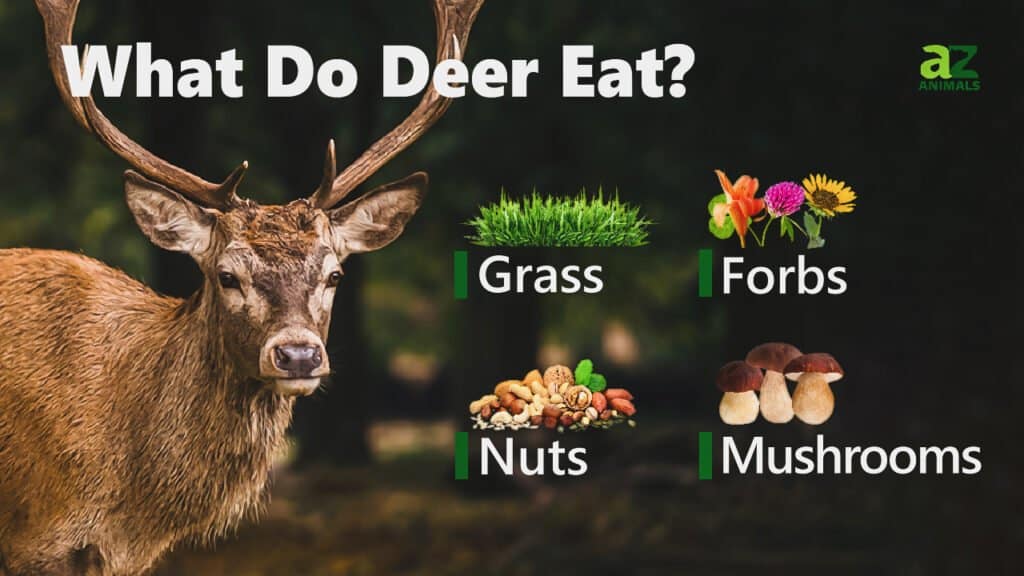
Deer have a diverse diet and can eat hundreds of different foods. They are known to eat everything from grasses, sedges, forbs, herbs, legumes, fruits, nuts, grains, roots, twigs, leaves to even rodents and birds. In fact, one study identified over 400 plant species as deer food in the Southeast alone. This adaptability and wide range of food choices contribute to their success as a species.
While the full list of foods deer will eat is too long to mention here, there are some key favorites that hunters should be aware of. Acorns are particularly favored by deer when available and can make up as much as 80% of their diet during certain times. Alfalfa is another favorite that deer will eat all year round. They also love apples and will flock to orchards when the fruit is ripe.
Beechnuts are an important food source in areas where oak trees are scarce or when acorn crops fail. Brassicas such as rape, kale, turnips, rutabaga, and radishes are excellent late-season food plot options that provide green forage when other sources have dried up. Cereal grains like rye, wheat, and oats are also highly preferred by deer.
Clover fields attract deer just like alfalfa does. Corn is another beloved food source for deer hunters should keep an eye on during harvest time. Cowpeas are heat-tolerant plants that deer find irresistible in early fall. Fall leaves are also consumed by deer, with red-colored leaves being their favorite due to higher sugar content.
Fir needles become a staple food for winter deer in western regions where other sources may be scarce. Forbs such as pokeweed, astor, ragweed, wild strawberry, and goldenrod make up a significant portion of a whitetail’s summer diet. Milo or grain sorghum not only provides great bedding cover but is also a favored food source for mule deer and whitetails.
Deer will eat mushrooms whenever they find them, and they seem to have the ability to distinguish between poisonous and non-poisonous varieties. Northern white cedar trees are often half-eaten by deer in suburban areas where they are commonly planted. Pears and persimmons are highly attractive fruits that deer cannot resist.
Other fruits like wild berries, raspberry, blackberry, sumac, and honey locust pods can also be important food sources for deer. Saplings and shrubs provide essential browse for deer, especially in big-woods habitats. Soybeans are a favorite food plot planting that attracts deer both early and late in the season. Lastly, treetops become a valuable food source when they fall after wind storms or logging operations.
In addition to these key foods, browse is an essential part of a deer’s diet. Leaves, twigs, and buds of small woody plants stimulate digestion in their rumen. Some top browse species include ash, aspen, bitterbrush, dewberry vine, dogwood, greenbrier vine, honeysuckle vine, maple trees (red, sugar, striped), mountain laurel plant, poplar trees (yellow leaves/buds), sagebrush (for mule deer), and willow trees.
It’s also worth noting that deer may occasionally target lawns and gardens if they are easily accessible. Suburban hunters should be mindful of this when choosing stand locations near residential areas.
Overall, understanding the key foods that deer prefer can greatly enhance a hunter’s chances of success during hunting seasons. By keeping tabs on these favored foods throughout the year and adjusting hunting strategies accordingly, hunters can increase their chances of encountering deer in desired locations.
https://www.youtube.com/watch?v=G8X594TIiag&pp=ygUIZGVlciBlYXQ%3D









































![Air gun 101: The differences between .177 & .22 – Which jobs they do best ? [Infographic]](https://airgunmaniac.com/wp-content/uploads/2020/09/g44-150x150.jpg)


